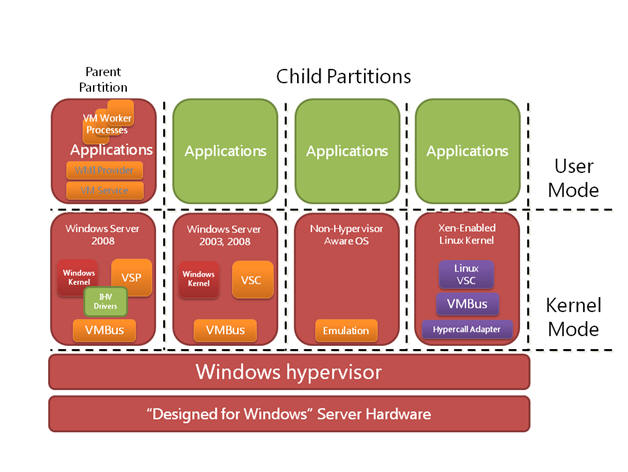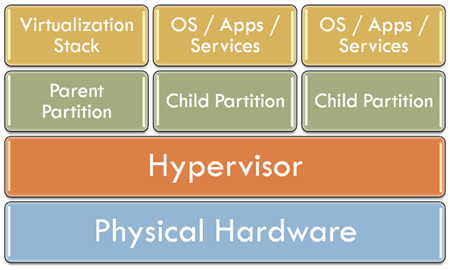What would your recommendation be for a Type 1 Hypervisor - including backup and restoration options
-
@scottalanmiller said in What would your recommendation be for a Type 1 Hypervisor - including backup and restoration options:
I just did twice.
By referring to a post you wrote? Not good enough
-
@scottalanmiller said in What would your recommendation be for a Type 1 Hypervisor - including backup and restoration options:
And I'm saying it is not an OS if you do so. Calling it an OS makes it seem like it must be. But the real answer is "if you implement an system that falls short of being an OS, it's not an OS." You are starting the statement by claiming it is an OS, so no matter how limited it is, it can't be so limited as to not be an OS. You are using it being an OS as the starting point.
Because it is an OS, by the very definition you provided yourself.
-
@dyasny said in What would your recommendation be for a Type 1 Hypervisor - including backup and restoration options:
@scottalanmiller said in What would your recommendation be for a Type 1 Hypervisor - including backup and restoration options:
I just did twice.
By referring to a post you wrote? Not good enough
No, I'm referring to the two references I provided. Wikipedia and StackOverflow.
Here is another...
https://www.brianmadden.com/opinion/Microsoft-Windows-Server-2008-Hyper-V-solution-overview
-
@dyasny said in What would your recommendation be for a Type 1 Hypervisor - including backup and restoration options:
@scottalanmiller said in What would your recommendation be for a Type 1 Hypervisor - including backup and restoration options:
And I'm saying it is not an OS if you do so. Calling it an OS makes it seem like it must be. But the real answer is "if you implement an system that falls short of being an OS, it's not an OS." You are starting the statement by claiming it is an OS, so no matter how limited it is, it can't be so limited as to not be an OS. You are using it being an OS as the starting point.
Because it is an OS, by the very definition you provided yourself.
Then it can run whatever and your "limited" clearly isn't limited.
-
I've provided three references, plus have been through this countless times. At some point you need to produce something. Again, the sky is blue. At some point, standard knowledge being questioned needs some proof.
Sure, at some point, people didn't believe the Earth circles the sun. The "industry" can be wrong. But you still have to provide more than "I said so now" about something being something long ago. I wrote about this being a myth at the time.
-
Here we go, from MS themselves in 2008...
https://social.technet.microsoft.com/wiki/contents/articles/157.hyper-v-architecture.aspx
-
-
Basically what I am saying is not that you can't be right, but you are solidly into the realm of conspiracy theory. You are stating that everyone discussing Hyper-V during the 2008 and 2008 R2 era (and everyone since), including Microsoft themselves, are involved in having produced a huge cover up. And one that would make no sense as their customers widely didn't care or understand anyway. Pretty much the entire industry has to be involved in a coordinated effort to support Microsoft's claim of how they designed their software.
And common sense says that given the failures of trying the Type 2 route to get to market quickly, and having had time to observe Xen and ESX success, and having the resources to build software like they do... that Microsoft would have done the logical thing - which all sources agree that they did.
So you see, I think it is reasonable to say that I have gone above and beyond, both at the time and regurgitating it now, to show that it is reasonable to believe Microsoft and the industry. If you want to claim it is all a conspiracy, fine. But there isn't even a behavioural hint, market value, or reason of any sort that we know of for Microsoft to have lied about this. It would have been easier to have just done it that way.
-
Another 2008 era resource (I'm using Google's time limiting to make sure I'm only getting content that hasn't been written later about it...)
-
@scottalanmiller said in What would your recommendation be for a Type 1 Hypervisor - including backup and restoration options:
LIke I said, you need to provide your documentation that goes against everything in the industry. You made the claim.
Here you go again with "everything in the industry". Show me this "everything"
-
@dyasny said in What would your recommendation be for a Type 1 Hypervisor - including backup and restoration options:
@scottalanmiller said in What would your recommendation be for a Type 1 Hypervisor - including backup and restoration options:
LIke I said, you need to provide your documentation that goes against everything in the industry. You made the claim.
Here you go again with "everything in the industry". Show me this "everything"
What do you think that I've been doing?
-
@scottalanmiller said in What would your recommendation be for a Type 1 Hypervisor - including backup and restoration options:
What do you think that I've been doing?
Sorry, don't have as much time for online debates as you do, I'm looking at what you posted right now, thanks for taking the time
-
@dyasny said in What would your recommendation be for a Type 1 Hypervisor - including backup and restoration options:
@scottalanmiller said in What would your recommendation be for a Type 1 Hypervisor - including backup and restoration options:
What do you think that I've been doing?
Sorry, don't have as much time for online debates as you do, I'm looking at what you posted right now, thanks for taking the time
I think of it as critical industry education.

But I would say that making wild counter-industry claims of a conspiracy to cover up systems architectures, going against a decade of discussion on this very topic, is something that should be held back if you don't have the time to really delve into it. Knowing that you are trying to completely redefine OS, kernel, hypervisor, hypervisor types, Hyper-V history... all of those things are fine, but it is a bit of a crusade that takes a lot of time.
-
https://www.itprotoday.com/virtualization/windows-server-2008-hyper-v-security
Hyper-V Architectural Defenses
When Hyper-V loads, it creates a thin abstraction layer (less than 1MB) called the hypervisor. It operates between the physical server hardware and the host OS. The hypervisor interfaces directly with the server hardware and loads before the host OS starts. You could also define the hypervisor as a mini OS that allows for the virtualization of other OSs on top of it. All OSs that run on a Hyper-V server (both the virtualized ones and the host OS) always run inside a virtual machine (VM) that's under the watchful eye of the hypervisor. Virtual Server uses a different approach in which the host OS runs beside the virtualization layer, and the host OS also directly interfaces with the hardware.
-
-
Hyper-V Architecture
Hyper-V is a so called hypervisor. The hypervisor is installed between the hardware and the operating system. Hyper-V is a role in Windows Server 2008 and can only be installed after Windows Server 2008 is installed. When installing the Hyper-V role the hypervisor is “slid” between the hardware and the operating system. Besides the hypervisor a little more is installed as well. The VMBus is installed which is running in kernel mode as well as a Virtual Storage Provider (VSP). Furthermore a WMI provider is installed which is running in User Mode. A VMWorker process is spawn for every Virtual Machine that’s started when Hyper-V is running.
After installing the Hyper-V role in Windows Server 2008 the server needs to be rebooted and the server is operational. The original Windows Server 2008 that was installed is turned into a Virtual Machine as well, this one is called the “root” or the “parent partition”. It is a very special Virtual Machine since it controls the other Virtual Machines running on the server. I’ll get back to this later in this article.
Virtual Machines and the parent partition on Hyper-V are running side-by-side as shown in

-
Adding to confusion... Hyper-V was sometimes called "Windows hypervisor" and Type 1 was often called "hypervisor virtualization" in the 2008 era. But just marketing terms being thrown around.
-
-
Hyper-V team themselves talking about architecture in 2008.
"Hypervisor is very thin and runs on the hardware itself."
-
@scottalanmiller said in What would your recommendation be for a Type 1 Hypervisor - including backup and restoration options:
But I would say that making wild counter-industry claims of a conspiracy to cover up systems architectures, going against a decade of discussion on this very topic, is something that should be held back if you don't have the time to really delve into it. Knowing that you are trying to completely redefine OS, kernel, hypervisor, hypervisor types, Hyper-V history... all of those things are fine, but it is a bit of a crusade that takes a lot of time.
I specifically remember this being a huge problem for MS, because they couldn't pretty much go the KVM route on server 2008, and them fixing the issue by changing direction and replicating Xen's architecture (and actually hiring Xen engineers to do that).
I also remember some private demos MS gave us for hyper-v on pre-release versions of 2008 and experimental 2003 builds that were, frankly, horrible. But all that was in 2007, so I might be confusing the dates here a bit.
As for crusades, I don't really care enough to make a real issue out of it, I'm just annoyed by marketing people peddling "baremetal", double kernel design as better because "baremetal". to illustrate my point, I'll just leave this here:



